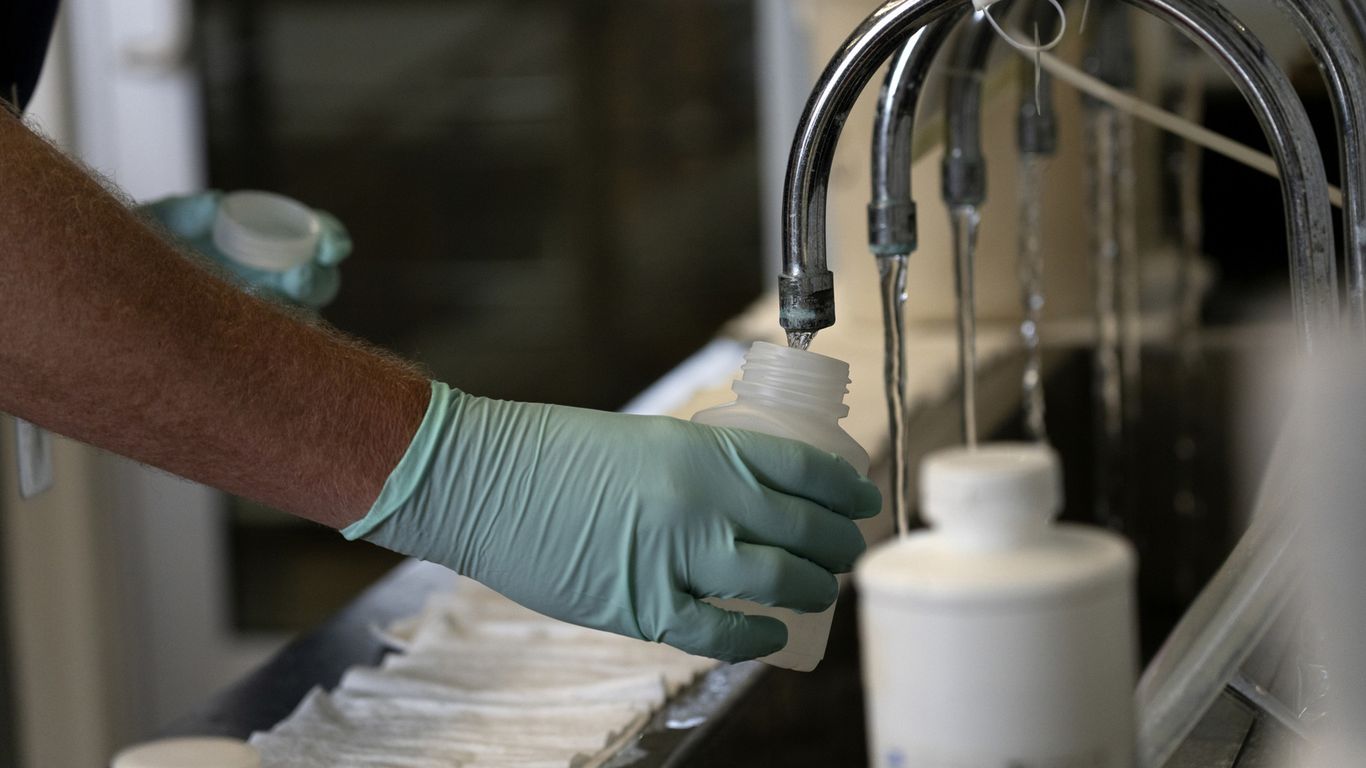Investigation Reveals Widespread Forever Chemical Pollution In US Drinking Water

Table of Contents
The Extent of PFAS Contamination Across the US
The investigation paints a stark picture of PFAS contamination's geographic reach across the United States. Many states, including but not limited to California, Michigan, and New Hampshire, show significant levels of PFAS in their drinking water supplies. This contamination is not limited to isolated incidents; it's a widespread problem affecting both municipal water systems and private wells, impacting millions of Americans.
Visualizing the data through maps and charts clearly demonstrates the pervasive nature of this issue. The maps show hotspots of contamination clustered around industrial sites, military bases, and areas with a history of firefighting foam use. Different types of PFAS, such as PFOA and PFOS, have been detected, originating from various sources, including:
- Firefighting foam: A significant source of PFAS contamination, particularly near airports and military bases.
- Industrial discharges: Manufacturing processes using PFAS chemicals have released these pollutants into the environment for decades.
- Landfills: PFAS-containing products disposed of in landfills can leach into groundwater.
Specific examples highlight the scale of the problem:
- Many municipal water supplies serving large populations have tested positive for detectable levels of PFAS.
- Thousands of private wells across the nation are contaminated, leaving residents with no readily available clean drinking water.
- Contamination levels in many areas far exceed the EPA's health advisory levels, although these are not legally enforceable standards.
Health Risks Associated with Forever Chemical Exposure
Exposure to even low levels of PFAS is linked to a range of serious health problems, supported by extensive scientific research. Long-term exposure is particularly concerning, increasing the risks of:
- Kidney cancer: Studies show a strong correlation between PFAS exposure and an increased risk of this deadly cancer.
- Liver damage: PFAS can impair liver function and lead to various liver diseases.
- Immune deficiency: Exposure can weaken the immune system, making individuals more susceptible to infections.
- Thyroid disorders: Emerging research indicates a possible link between PFAS and thyroid problems.
- Developmental delays in children: PFAS exposure during pregnancy and childhood may affect child development.
Vulnerable populations are disproportionately at risk:
- Children: Their developing bodies are more susceptible to the harmful effects of PFAS.
- Pregnant women: PFAS can cross the placenta and harm the developing fetus.
The lack of clear, universally enforced safety standards and regulatory challenges further exacerbate these health concerns. Many states lack robust regulations, leaving millions exposed without adequate protection.
Sources of PFAS Contamination and Pathways into Drinking Water
The primary sources of PFAS pollution are multifaceted and often intertwined:
- Industrial sites: Manufacturing plants using PFAS chemicals have historically released significant amounts into the environment.
- Military bases: The use of firefighting foam containing PFAS has contaminated soil and water around numerous military installations.
- Landfills: Improper disposal of PFAS-containing products allows these chemicals to leach into groundwater.
These chemicals can migrate into drinking water sources through various pathways:
- Groundwater contamination: PFAS readily move through soil and contaminate groundwater aquifers, which are often the source of drinking water for many communities.
- Surface water contamination: PFAS can run off from contaminated sites into rivers, lakes, and streams, ultimately entering drinking water treatment plants.
- Aging infrastructure: Leaking pipes and other infrastructure deficiencies can facilitate the spread of PFAS in water systems.
Identifying and remediating these contaminated sites is a monumental challenge, requiring extensive investigation, costly cleanup efforts, and ongoing monitoring.
What Can Be Done About Forever Chemical Pollution?
Addressing PFAS contamination requires a multi-pronged approach involving technological solutions, stricter regulations, and increased public awareness:
-
Water treatment technologies: Several technologies can effectively remove PFAS from drinking water, including:
- Activated carbon filtration: A cost-effective method for removing some PFAS compounds.
- Ion exchange: A highly effective but more expensive treatment method.
- Advanced oxidation processes: Emerging technologies capable of breaking down PFAS molecules.
-
Government regulations and policies: Stronger regulations are crucial to reduce PFAS releases and hold polluters accountable. This includes setting stricter discharge limits, phasing out PFAS-containing products, and increasing funding for research and cleanup efforts.
-
Public awareness campaigns: Educating the public about the risks of PFAS exposure is vital to encouraging individual actions and demanding governmental changes.
-
Increased research funding: Further research is needed to understand the long-term health effects of PFAS exposure and develop more effective and affordable remediation technologies.
Actions individuals can take:
- Learn about PFAS contamination in your area: Many states and local governments are monitoring PFAS levels in drinking water. Check for local reports and advisories.
- Consider installing a home water filter: A high-quality filter can remove PFAS from your drinking water. Look for filters certified to remove PFAS.
- Contact your elected officials: Advocate for stronger regulations and increased funding to address PFAS contamination.
Conclusion: Addressing the Widespread Threat of Forever Chemicals in Our Drinking Water
The investigation clearly demonstrates the widespread and severe threat posed by forever chemicals in US drinking water. The long-term health consequences of PFAS exposure are significant, affecting vulnerable populations disproportionately. Immediate action is crucial to protect public health and safeguard our nation's water resources. We must demand stronger regulations, support research initiatives, and invest in effective water treatment technologies. Learn more about PFAS contamination in your area, contact your elected officials, and take steps to filter your drinking water if you have concerns. Together, we can combat this pervasive threat and ensure access to clean, safe drinking water for all Americans. Don't let forever chemicals contaminate your future; act now to protect your family and community from the dangers of these toxic substances.

Featured Posts
-
 The Arcade Is Back Nhl 25s New Game Mode
May 16, 2025
The Arcade Is Back Nhl 25s New Game Mode
May 16, 2025 -
 Boston Celtics Future Uncertain After Record Breaking 6 1 Billion Sale
May 16, 2025
Boston Celtics Future Uncertain After Record Breaking 6 1 Billion Sale
May 16, 2025 -
 20 And Under Shop Boston Celtics Finals Gear Now
May 16, 2025
20 And Under Shop Boston Celtics Finals Gear Now
May 16, 2025 -
 A Conversation With Two Max Muncys
May 16, 2025
A Conversation With Two Max Muncys
May 16, 2025 -
 Could This Underdog App Topple Metas Tech Throne
May 16, 2025
Could This Underdog App Topple Metas Tech Throne
May 16, 2025
